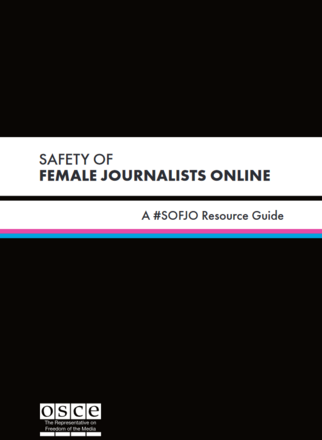
Related contents
Safety of Female Journalists Online (#SOFJO)#SOFJO campaign for the safety of female journalists online
The Office of the OSCE Representative on Freedom of the Media (RFoM) has developed this comprehensive #SOFJO Resource Guide to assist both State and non-State actors with guidance on improving the safety of female journalists online.
After a short introduction of the problem and a mapping of international human rights standards that support the safety of women journalists online, 40 actions are proposed to be implemented with one common approach. Relevant examples and resources are added to these proposed actions.
Proposed actions are suggested to the different authorities and institutions: governments, parliaments, courts, law enforcement agencies (police), intergovernmental organizations, internet intermediaries, media outlets, journalists' and civil society organizations, educational institutions and media workers.
Among these 40 actions, the initiatives to be taken by colleagues are quite important, such as:
1. Monitor and assess the risk landscape for female journalists;
2. Practice a holistic approach towards safety and security, including physical, legal, psychosocial and digital security;
3. Document and report threats and attacks;
4. Support colleagues who are facing online abuse and harassment, and those who are at higher risk of experiencing such attacks;
5. Become informed on available forms of support, including legal mechanisms.
One of the principles of this guide is, in fact, that "A threat to everyone needs action from everyone".
Tags: Online news Online media Media and genderThe content of this article can be used according to the terms of Creative Commons: Attribution-NonCommercial 4.0 International (CC BY-NC 4.0) . To do so use the the wording "this article was originally published on the Resource Centre on Media Freedom in Europe" including a direct active link to the original article page.

